-
 Bitcoin
Bitcoin $83,891.7312
-1.88% -
 Ethereum
Ethereum $1,578.4275
-3.33% -
 Tether USDt
Tether USDt $1.0000
0.00% -
 XRP
XRP $2.0794
-3.57% -
 BNB
BNB $581.8908
-0.92% -
 Solana
Solana $125.6113
-4.72% -
 USDC
USDC $1.0000
0.01% -
 TRON
TRON $0.2542
2.44% -
 Dogecoin
Dogecoin $0.1532
-3.25% -
 Cardano
Cardano $0.6060
-4.54% -
 UNUS SED LEO
UNUS SED LEO $9.3729
-0.62% -
 Chainlink
Chainlink $12.1807
-2.99% -
 Avalanche
Avalanche $18.8840
-5.20% -
 Stellar
Stellar $0.2359
-2.26% -
 Toncoin
Toncoin $2.8640
-4.28% -
 Shiba Inu
Shiba Inu $0.0...01167
-1.98% -
 Sui
Sui $2.0804
-4.68% -
 Hedera
Hedera $0.1572
-4.15% -
 Bitcoin Cash
Bitcoin Cash $318.3980
-3.27% -
 Litecoin
Litecoin $74.6060
-3.46% -
 Polkadot
Polkadot $3.5135
-3.83% -
 Dai
Dai $1.0001
0.01% -
 Bitget Token
Bitget Token $4.3450
0.02% -
 Hyperliquid
Hyperliquid $15.2439
-4.40% -
 Ethena USDe
Ethena USDe $0.9993
0.01% -
 Pi
Pi $0.6134
-9.10% -
 Monero
Monero $217.7508
1.15% -
 Uniswap
Uniswap $5.1593
-3.72% -
 OKB
OKB $52.0646
-0.19% -
 Pepe
Pepe $0.0...07144
-1.75%
How does the Stratum protocol work?
The Stratum protocol enhances mining efficiency and security by streamlining communication between miners and pool servers, supporting scalability and various algorithms.
Apr 08, 2025 at 08:56 pm
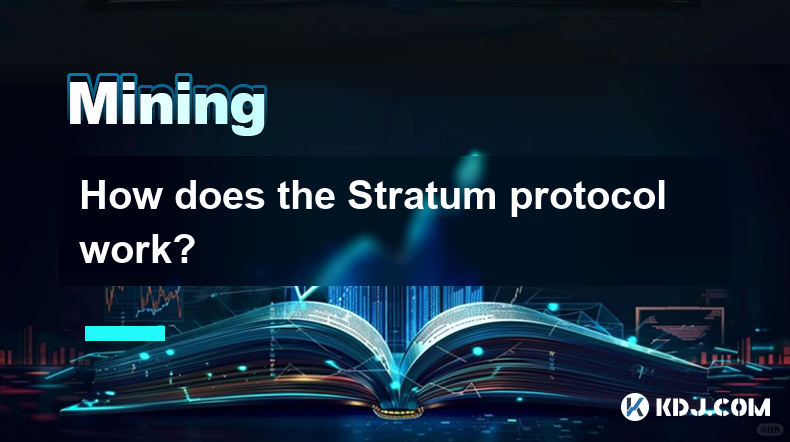
The Stratum protocol is a specialized protocol used in the cryptocurrency mining industry to facilitate communication between miners and mining pool servers. It plays a crucial role in ensuring efficient and secure mining operations. In this article, we will delve into the workings of the Stratum protocol, its key components, and how it benefits the mining ecosystem.
What is the Stratum Protocol?
The Stratum protocol is a line-based protocol designed to streamline the communication between miners and mining pool servers. It was developed to replace older protocols like Getwork and Getblocktemplate, offering improved efficiency and scalability. The primary goal of Stratum is to enable miners to receive work assignments from the pool server and submit their solutions quickly and securely.
Key Components of the Stratum Protocol
The Stratum protocol consists of several key components that work together to facilitate efficient mining operations. These components include:
Connection Establishment: The initial step in the Stratum protocol involves establishing a connection between the miner and the mining pool server. This connection is typically secured using SSL/TLS to ensure data integrity and confidentiality.
Authentication: Once the connection is established, the miner must authenticate itself to the mining pool server. This is done by sending an authentication request containing the miner's username and password. The server verifies these credentials and, if valid, grants access to the miner.
Work Assignment: After successful authentication, the mining pool server assigns work to the miner. This work is in the form of a mining job, which includes details such as the block header, target difficulty, and other relevant parameters. The miner receives this job through a "mining.notify" message.
Solution Submission: The miner processes the assigned work and attempts to find a valid solution. If a solution is found, the miner submits it to the mining pool server using a "mining.submit" message. The server then verifies the solution and, if valid, rewards the miner accordingly.
Status Updates: Throughout the mining process, the Stratum protocol allows for continuous status updates between the miner and the server. These updates can include changes in the mining job, network difficulty adjustments, and other relevant information.
How Does the Stratum Protocol Work?
The Stratum protocol operates through a series of well-defined steps that ensure efficient communication and mining operations. Here is a detailed breakdown of how the protocol works:
Establishing a Connection: The miner initiates a connection to the mining pool server using a specified IP address and port. This connection is typically secured using SSL/TLS to protect against eavesdropping and man-in-the-middle attacks.
Sending an Authentication Request: Once connected, the miner sends an authentication request to the server. This request includes the miner's username and password, which are used to verify the miner's identity. The server responds with an authentication result, indicating whether the miner is granted access.
Receiving a Mining Job: After successful authentication, the miner receives a mining job from the server. This job is sent via a "mining.notify" message and includes all necessary parameters for the miner to start working on the assigned block.
Processing the Mining Job: The miner processes the received job by attempting to find a valid solution that meets the specified target difficulty. This involves performing complex cryptographic calculations to find a hash that satisfies the block's requirements.
Submitting a Solution: If the miner finds a valid solution, it is submitted to the mining pool server using a "mining.submit" message. This message includes the solution and other relevant data, such as the job ID and nonce used to find the solution.
Receiving a Response: The mining pool server verifies the submitted solution and responds with a result. If the solution is valid, the miner is rewarded according to the pool's reward structure. If the solution is invalid, the miner may receive an error message and continue working on new jobs.
Benefits of Using the Stratum Protocol
The Stratum protocol offers several benefits that make it a preferred choice for cryptocurrency mining operations. These benefits include:
Improved Efficiency: The Stratum protocol is designed to minimize latency and maximize throughput, allowing miners to receive and process work assignments quickly. This results in higher mining efficiency and increased chances of finding valid solutions.
Scalability: The protocol is highly scalable, capable of handling a large number of miners and mining jobs simultaneously. This makes it suitable for large-scale mining operations and mining pools with thousands of participants.
Security: The use of SSL/TLS encryption ensures that communication between miners and the mining pool server is secure. This protects against unauthorized access and data tampering, enhancing the overall security of the mining ecosystem.
Flexibility: The Stratum protocol supports various mining algorithms and can be easily adapted to different cryptocurrency networks. This flexibility allows miners to switch between different mining pools and cryptocurrencies without significant changes to their mining setup.
Implementing the Stratum Protocol
To implement the Stratum protocol, miners need to follow a series of steps to set up their mining software and connect to a mining pool server. Here is a detailed guide on how to implement the Stratum protocol:
Choose a Mining Pool: Select a reputable mining pool that supports the Stratum protocol. Research different pools to find one that offers competitive fees, reliable payouts, and good customer support.
Install Mining Software: Download and install mining software that supports the Stratum protocol. Popular options include CGMiner, EasyMiner, and MultiMiner. Follow the software's installation instructions to set it up on your mining rig.
Configure the Mining Software: Open the mining software and navigate to the configuration settings. Enter the mining pool's server address, port number, and your mining account credentials (username and password). Ensure that the software is set to use the Stratum protocol for communication.
Establish a Connection: Launch the mining software and initiate a connection to the mining pool server. The software will send an authentication request to the server, and upon successful authentication, you will be connected to the pool.
Start Mining: Once connected, the mining software will receive mining jobs from the pool server. The software will process these jobs and attempt to find valid solutions. If a solution is found, it will be submitted to the server for verification and potential reward.
Monitor and Adjust: Keep an eye on your mining software's performance and adjust settings as needed. Monitor the mining pool's status and any updates or changes to the mining jobs. Ensure that your mining rig is running efficiently and that you are receiving regular payouts from the pool.
Frequently Asked Questions
Q: Can the Stratum protocol be used with any cryptocurrency?
A: The Stratum protocol is primarily designed for Bitcoin and other cryptocurrencies that use similar mining algorithms. However, it can be adapted for use with other cryptocurrencies by modifying the mining software and pool server to support different algorithms and protocols.
Q: What are the potential risks associated with using the Stratum protocol?
A: While the Stratum protocol offers many benefits, there are some potential risks to consider. These include the risk of pool server downtime, which can interrupt mining operations, and the risk of security breaches if the SSL/TLS encryption is compromised. Miners should choose reputable mining pools and keep their mining software up to date to mitigate these risks.
Q: How does the Stratum protocol handle network difficulty adjustments?
A: The Stratum protocol allows mining pool servers to send updates to miners regarding changes in network difficulty. When the network difficulty adjusts, the pool server will send a new "mining.notify" message with updated parameters, ensuring that miners continue to work on valid mining jobs.
Q: Is it possible to mine solo using the Stratum protocol?
A: The Stratum protocol is primarily designed for use with mining pools, as it facilitates efficient communication between miners and pool servers. While it is technically possible to use the Stratum protocol for solo mining, it would require significant modifications to the mining software and pool server setup, making it less practical for most miners.
Disclaimer:info@kdj.com
The information provided is not trading advice. kdj.com does not assume any responsibility for any investments made based on the information provided in this article. Cryptocurrencies are highly volatile and it is highly recommended that you invest with caution after thorough research!
If you believe that the content used on this website infringes your copyright, please contact us immediately (info@kdj.com) and we will delete it promptly.
- Gold prices have surpassed $3,300 per ounce, setting a historic high as global markets face heightened volatility.
- 2025-04-16 20:35:12
- Mantra Labs CEO John Mullin Aims to Earn Community Confidence by Permanently Removing the Team's Tokens from Circulation
- 2025-04-16 20:35:12
- Mantra CEO John Mullin Plans to Burn All Team-Held OM Tokens to Rebuild Trust
- 2025-04-16 20:30:13
- BNB Chain Burns $916 Million Worth of Tokens in Latest Incineration Event
- 2025-04-16 20:30:13
- Bitcoin (BTC) Dips to $83k Today as Market Uncertainty Grips the Crypto Space
- 2025-04-16 20:25:13
- Pi Coin Price Has Slipped Nearly 15% Today to $0.6
- 2025-04-16 20:25:13
Related knowledge

How to troubleshoot hardware failures during mining?
Apr 16,2025 at 08:42pm
Mining cryptocurrency can be a rewarding venture, but it often comes with its own set of challenges, particularly when it comes to hardware failures. Hardware failures can significantly disrupt your mining operations, leading to downtime and potential loss of revenue. This article will guide you through the process of troubleshooting common hardware fai...
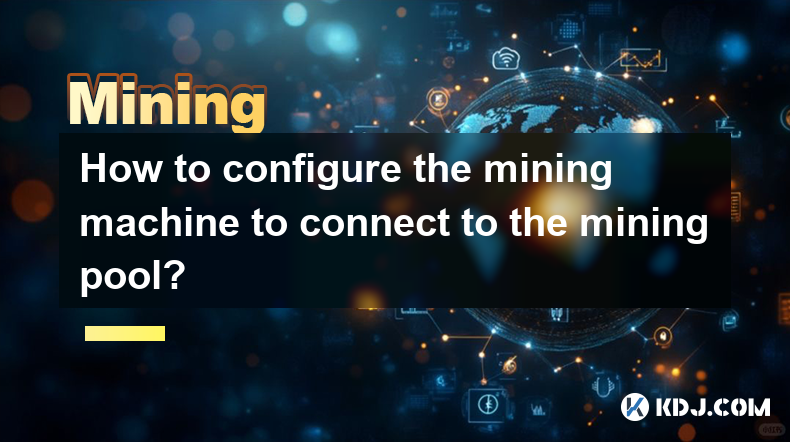
How to configure the mining machine to connect to the mining pool?
Apr 16,2025 at 08:35pm
Introduction to Mining Machine ConfigurationConfiguring a mining machine to connect to a mining pool is a crucial step for cryptocurrency miners looking to optimize their mining operations. A mining pool is a collective group of miners who combine their computational resources to increase their chances of solving complex cryptographic puzzles and earnin...
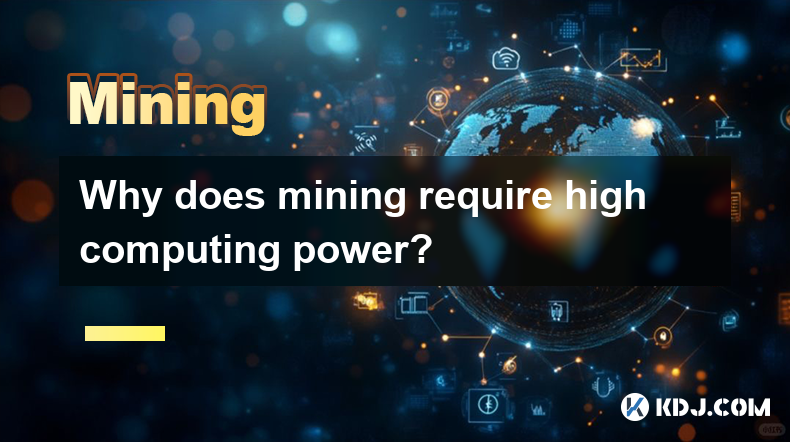
Why does mining require high computing power?
Apr 16,2025 at 12:07pm
Mining in the cryptocurrency world, particularly in the case of Bitcoin and other Proof of Work (PoW) cryptocurrencies, is a process that demands significant computational resources. This article delves into the reasons behind this high demand for computing power, exploring the technical intricacies and the underlying principles that necessitate such re...
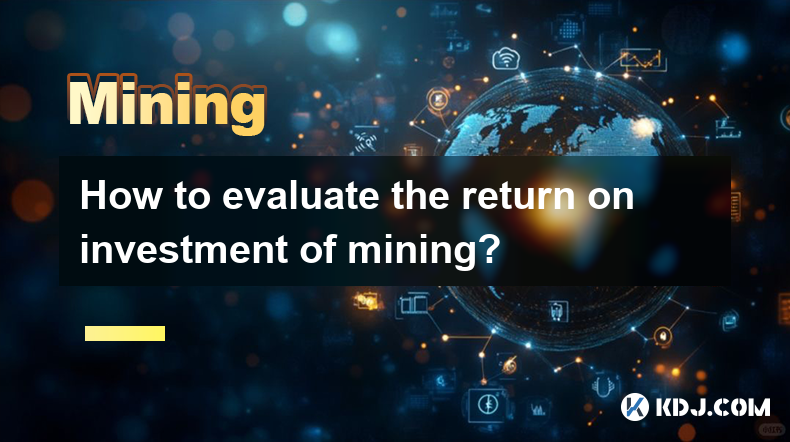
How to evaluate the return on investment of mining?
Apr 16,2025 at 05:28pm
Mining in the cryptocurrency world refers to the process of verifying transactions and adding them to the blockchain, which in turn rewards miners with newly created coins. Evaluating the return on investment (ROI) of mining is crucial for miners to understand whether their operations are profitable. This article will delve into the various factors and ...
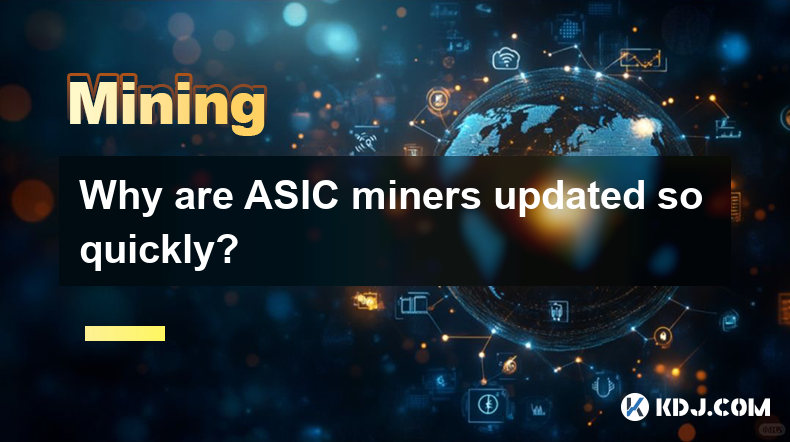
Why are ASIC miners updated so quickly?
Apr 16,2025 at 01:07pm
The rapid updates of ASIC miners in the cryptocurrency industry are driven by several key factors that contribute to their constant evolution and improvement. ASIC miners, or Application-Specific Integrated Circuit miners, are specialized hardware designed to mine specific cryptocurrencies with high efficiency. The primary reason for their frequent upda...
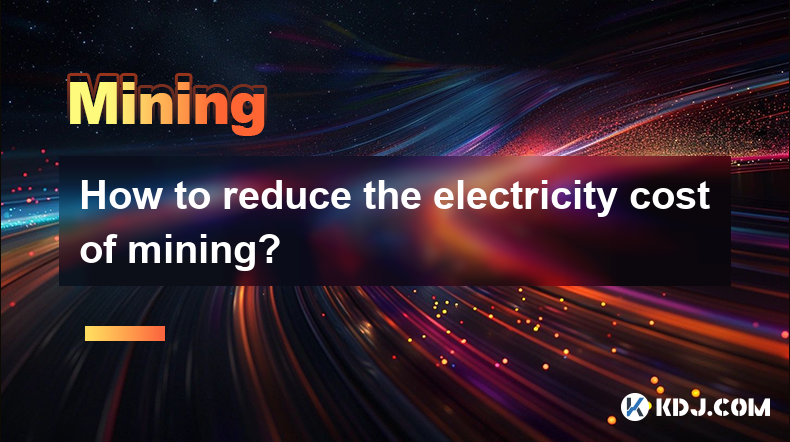
How to reduce the electricity cost of mining?
Apr 16,2025 at 08:42am
Mining cryptocurrencies, particularly Bitcoin, is an energy-intensive process that can lead to significant electricity costs. However, there are several strategies that miners can employ to reduce these expenses and make their operations more cost-effective. In this article, we will explore various methods to minimize the electricity cost of mining. Cho...

How to troubleshoot hardware failures during mining?
Apr 16,2025 at 08:42pm
Mining cryptocurrency can be a rewarding venture, but it often comes with its own set of challenges, particularly when it comes to hardware failures. Hardware failures can significantly disrupt your mining operations, leading to downtime and potential loss of revenue. This article will guide you through the process of troubleshooting common hardware fai...

How to configure the mining machine to connect to the mining pool?
Apr 16,2025 at 08:35pm
Introduction to Mining Machine ConfigurationConfiguring a mining machine to connect to a mining pool is a crucial step for cryptocurrency miners looking to optimize their mining operations. A mining pool is a collective group of miners who combine their computational resources to increase their chances of solving complex cryptographic puzzles and earnin...

Why does mining require high computing power?
Apr 16,2025 at 12:07pm
Mining in the cryptocurrency world, particularly in the case of Bitcoin and other Proof of Work (PoW) cryptocurrencies, is a process that demands significant computational resources. This article delves into the reasons behind this high demand for computing power, exploring the technical intricacies and the underlying principles that necessitate such re...

How to evaluate the return on investment of mining?
Apr 16,2025 at 05:28pm
Mining in the cryptocurrency world refers to the process of verifying transactions and adding them to the blockchain, which in turn rewards miners with newly created coins. Evaluating the return on investment (ROI) of mining is crucial for miners to understand whether their operations are profitable. This article will delve into the various factors and ...

Why are ASIC miners updated so quickly?
Apr 16,2025 at 01:07pm
The rapid updates of ASIC miners in the cryptocurrency industry are driven by several key factors that contribute to their constant evolution and improvement. ASIC miners, or Application-Specific Integrated Circuit miners, are specialized hardware designed to mine specific cryptocurrencies with high efficiency. The primary reason for their frequent upda...

How to reduce the electricity cost of mining?
Apr 16,2025 at 08:42am
Mining cryptocurrencies, particularly Bitcoin, is an energy-intensive process that can lead to significant electricity costs. However, there are several strategies that miners can employ to reduce these expenses and make their operations more cost-effective. In this article, we will explore various methods to minimize the electricity cost of mining. Cho...
See all articles























































































